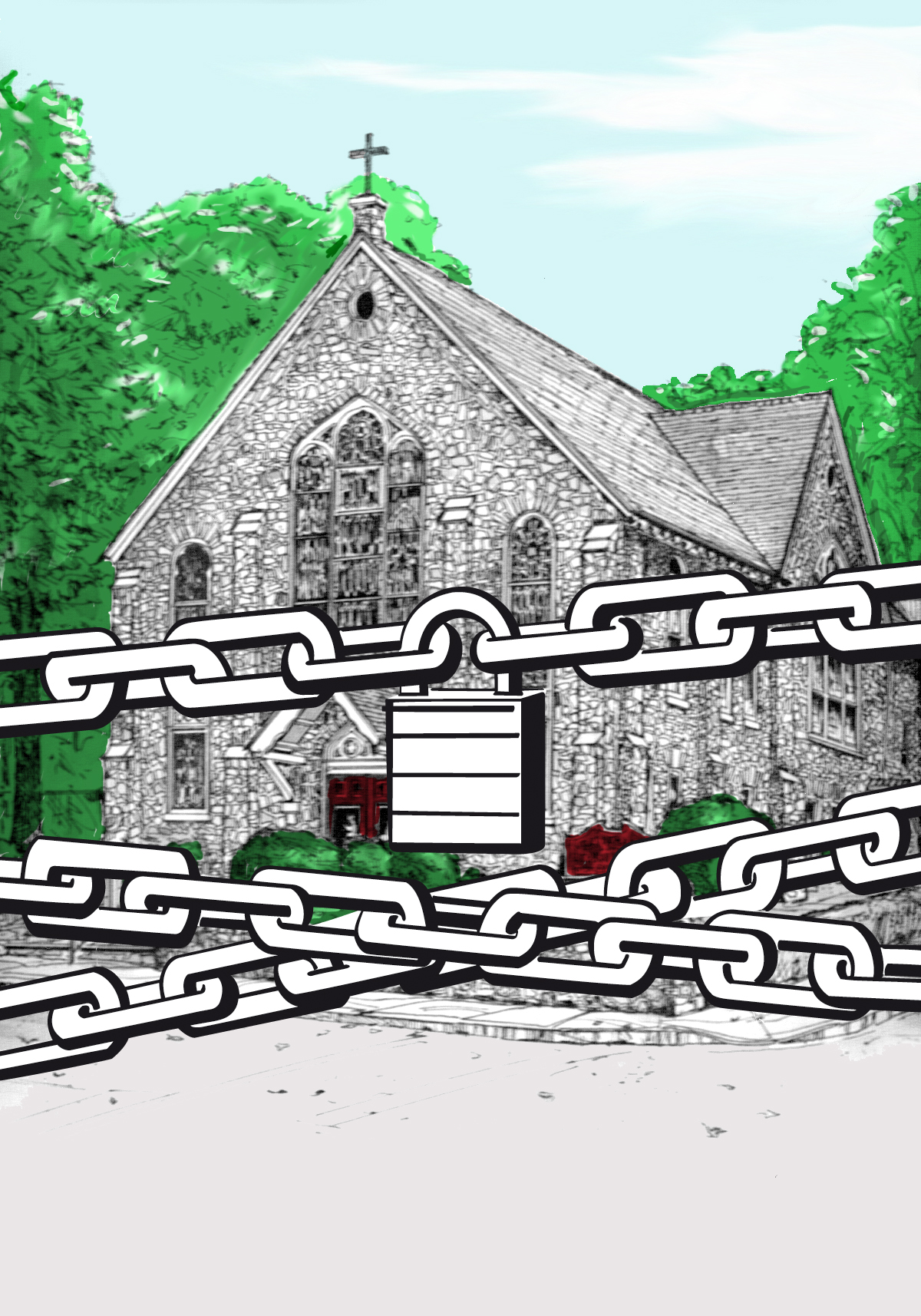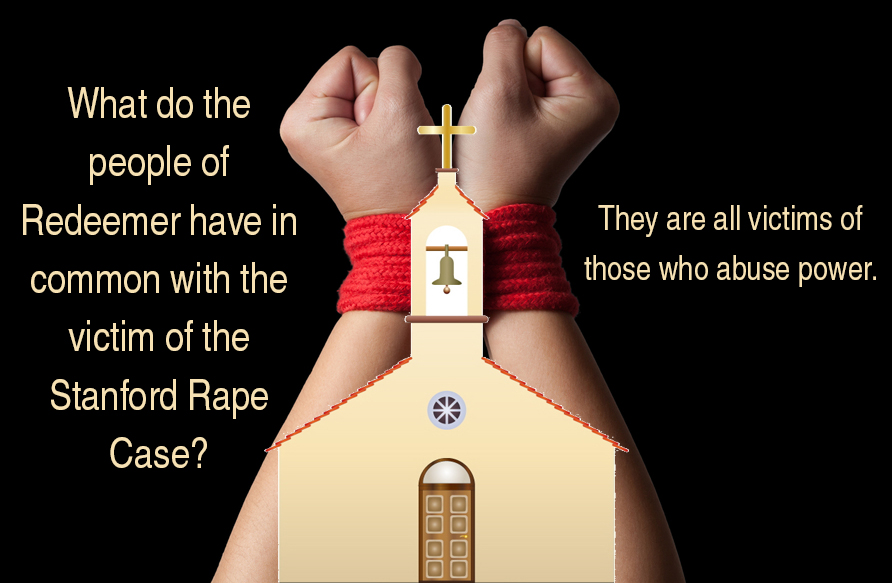When things get tough—
- when a pastor leaves without preparing the congregation,
- when an economic recession plays havoc with the budget,
- when demographics change but leadership strategies don’t,
- when volunteers stop raising their hands,
- when all of this affects attendance and offerings,
it is natural to seek help.
Often small congregations feel distant from their regional bodies—feeling off the radar—especially If they have had only part-time ministers for years and little interaction at the regional level.
Congregations seeking help are usually trying to find a way through a troubling time. That may not be what your regional body has in mind.
Puzzled lay leadership—often at odds, sometimes totally at sea—are tempted to look outside for help.
In come the consultants.
The Politics of Church Consulting
Congregations know their situations well. They may be less aware of how they are viewed by others, especially those they assume serve their interests.
It may be hard for consultants to see your congregation as anything but part of a trend of closing churches.
It may be hard for consultants to see your congregation as anything but part of a trend of closing churches. Spiritual/mission needs are tabled. Monetary and property assets are the focus.
Protocols and strategies to bring congregations to a decision to close are part of a consultant’s toolbox these days. They work with failing churches all the time. Sometimes, they are finding a way to make the best of failure. You may be just another congregation hesitating to face a dismal reality.
Read this recent blog post from a congregational consultant and notice the point of view and how often the congregation’s purpose is referenced as serving the needs of clergy and regional interests. Congregations are scolded for not giving up while they are viable! Looking toward their own sense of mission is depicted as selfish. Many small church lay leaders have experienced this ecclesiastic guilt trip.
Most churches entities—congregations, agencies, seminaries, and governing bodies— have a hard time with benevolence giving in today’s economic climate. Hungry eyes turn toward the weakest—most expendible in their reckoning.
Denominations face the same challenges congregations face. They need offering dollars and volunteers, but most of all they need to place pastors. Small churches compete for talented leadership and resources with fewer but larger, more resource-rich congregations!
Consultants, lacking vision for mission potential, are biased toward closing congregations as a resource protection strategy. Is that the kind of help you need?
How to Find A Consultant?
Regional bodies can provide referrals. These consultants may be independent of the denomination, but they are likely to have some bias toward denominational interests that feed them referrals.
With parishes closing at record speeds, consultants are often clergy with no parish call. They talen additional training to serve as consultants known as interim pastors. (Some become interim ministers after leading congregations that failed.)
The advantage of having an interim pastor is they have close ties to your dominations. It is also the disadvantage. In many cases the interim minister is assigned with no congregational search process. They report to the regional body. Their role is different from pastoring! This can confuse lay members who may relate to them in the only way they know pastors. If you work with an interim pastor make sure your congregation is represented in talks with your regional leader. Insist that at least two congregational members attend any meetings. Make this expectation known from the start. While you are at it, try to have some say in the choice of interim pastor/consultant. (This was the recommended protocol when the interim pastor concept was developed, but it has been abandoned by some leaders. Read the writings of Loren Mead.)
Today’s congregations have another source. Professional church consultants are plentiful on the internet. How do you choose?
Do some research.
Know the background of the consultant. Are they familiar with your denomination or tradition? What is their speciality? Finance? Conflict resolution? Program Development? Mission?
Judge them by their website. If they understand the potential of the internet as a ministry game-changer, they will be using it! Look for consultants that blog and demonstrate their understanding of parish issues from a congregational view.
Learn what they know about small churches. We are very different from larger, more corporate churches. Strategies that work for larger congregations can be folly in the small church setting.
Check their track record
Check OLDER references.
How did their advice play out over time?
Talk to more than one person in any church you approach. Concentrate on finding references from lay leaders. This might take some online research or even a visit to the congregation. If you find the church closed within a few years, beware.
Some noted consultants have never served in the small church setting. They grew up in large churches, did their seminary training in large churches, and sought calls in large churches. Their vision of success is likely to be defined against large church standards.
Have they worked with small churches?
Did they ever serve as pastor in small congregations?
Did they ever belong to small congregations?
TRUE STORY: One church consultant boasted about success replanting a struggling congregation. She convinced the congregation to close—turning over all assets to the denomination and excluding existing members from decision-making roles. The denomination canvased the neighborhood to rally a founding membership of nearly 100 members. The church reopened under a new name with considerable pageantry.
The consultant was eager to replicate this success.
A congregation considering her proposal visited the congregation she referenced. They found, barely ten years later, its membership had dropped considerably and had an average worship attendance of only 20.
This consultant had served only one congregation—a large suburban congregation—for five years before beginning a consultant’s career.
Beware of what you say.
Point of view is a critical factor in working with a consultant.
Consultants look at congregations from a management point of view.
Your members are likely to be trusting and willing to share their passion for ministry. They will be surprised when their candor is interpreted in ways they never intended.
TRUE STORY: The regional body recommended a consultant to a small church where a pastor had recently moved on, leaving a divided congregation. The pastor had used his influence in the regional office. As a result, the congregation had become suspicious of their own regional body. In this atmosphere of distrust, the turnout for the meeting with the consultant was low.
The consultant saw a disinterested membership. The congregation knew that wasn’t the case but gut impressions are difficult to change.
The consultant was surely given some background about the church—from the regional body’s point of view, which they learned from the axe-grinding pastor.
The congregation was interested in reaching new populations in their changing neighborhood and asked the consultant for advice, eager for a fresh start.
Towards the end of the discussion, one church member sighed. She was 85 years old—a pillar of the congregation. She had unsuccessfully invested a lot of energy in healing the fractious relationship with the pastor. She was understandably tired. After her long sigh, she commented. “I just want the church to be here for me when I die.”
Of all the optimism expressed at the meeting, guess which comment headlined the consultant’s report to the regional body—and later, the regional body’s assessment of the congregation’s potential—and continued to be quoted for years. The spin, based on this comment, was that the congregation couldn’t see past their own selfish needs and should close.
The congregation that had asked for help forging a future felt betrayed.
Making the best use of your consulting dollars.
It is good to enter any relationship with a consultant slowly. If your chosen consultant is traveling to meet with you, consider having a first meeting with your governing leadership online (Skype, for example). This may eliminate travel costs and reduce the hourly billing.
Prepare your congregation for any meeting with the consultant. Provide a detailed agenda. Your consultant will then be working with a prepared and engaged membership. There is less chance of your congregation feeling blind-sided.
Make sure your consultant is working for you.
Compare the work of consultants to the work of advisors such as coaches, physicians/therapists, or counselors. By tradition, and in some cases by law, they work for the entity that pays them. Consultants should be working for the congregations that pay their bill even if they are referred by the regional body.
This is often not the case.
If you want your work with the consultant to be confidential, make sure you say so up front.
Consultants Can Be Wrong
Consultants make mistakes. There is danger in following management fads. The problem: it is hard to recognize fads until time proves them wise or foolish.
TRUE STORY: A small church in the 1960s was busting at the seams with activity. A developer donated a few acres of undeveloped farmland sitting on a hill visible from the main highway just outside the village. The congregation drew up plans for a new larger facility. The regional body sent a consultant to review the plans. He nixed the plans saying the new building had to be on the main highway barely 100 yards from the donated land.
The church never relocated.
The community shifted. The congregation’s site, once prominently situated, is now a little-traveled side street. The donated land, still overlooking the major highway, sits in the middle of a huge housing development.
Consultants in the Modern Age
Make sure your consultant is living in today’s world.
Today’s small congregations are living at a time when much can be done with little. We should not despair. New opportunities abound.
Internet skills level the playing field. Many consultants discourage internet ministry. Why? Because many pastors lack modern communication skills. An understanding that the internet ministry is vital is lacking in Christian ministry. They cite ineffective results largely because skills are lacking. The internet, properly used, is a powerful ministry game-changer.
When interviewing consultants, ask questions about internet ministry. Find someone with strategical social media expertise to ask the questions. If the consultant puts you off, It is a sign that modern communications techniques are not part of their experience.
Finally, wait at least a month before you fill out any evaluations forms.
Have you ever had a service provider ask you to fill out an evaluation before they leave—before you know whether or not their work is any good? Wait until you’ve tested their advice before praising it!
A Little Pep Talk
Trust your instincts.
Remember. God encourages the small. Always.
photo credit: zeligfilm ESoDoc 2012 – Session 1 via photopin (license)







 Bill Maher, host of Real Time with Bill Maher,
Bill Maher, host of Real Time with Bill Maher,


